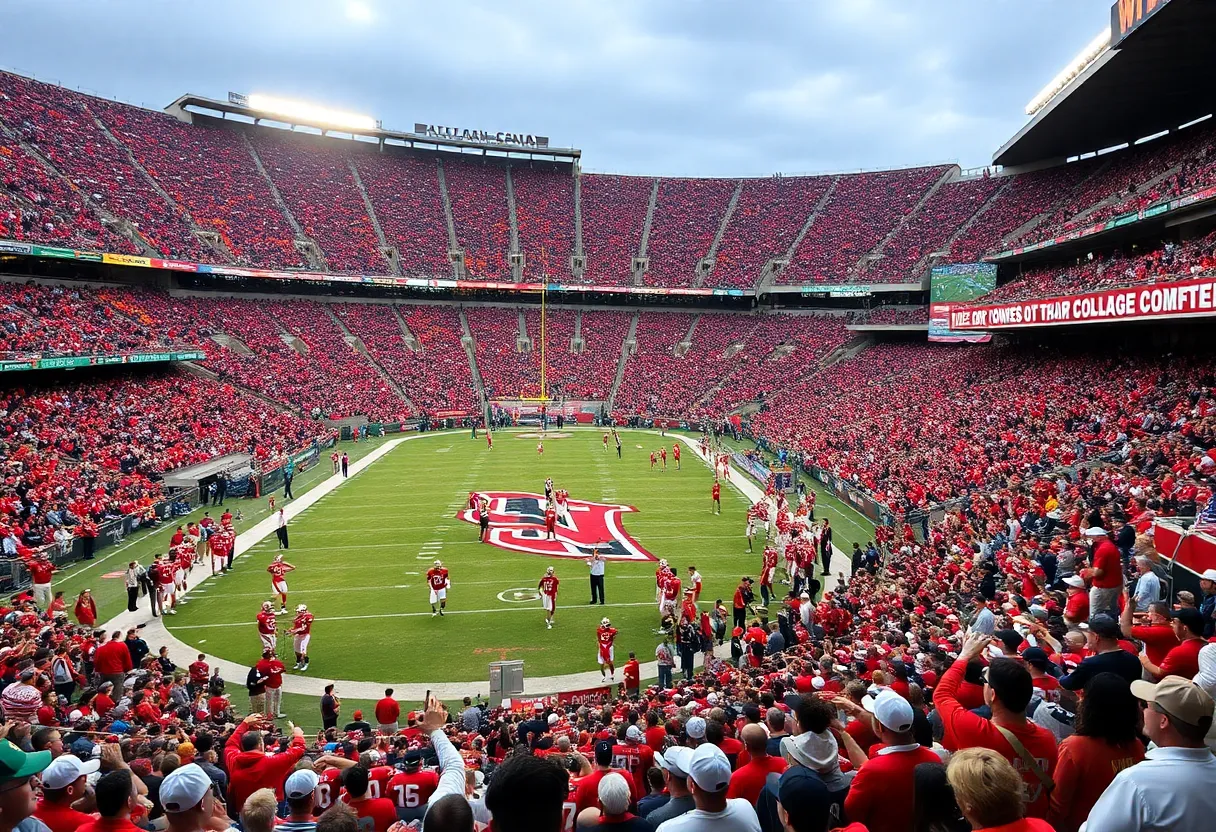Oklahoma City, October 12, 2025
Oklahoma City’s real estate market has seen a 12% increase in commercial leases this quarter, driven by tech startups relocating to downtown. The rise is attributed to demand for flexible office spaces as businesses adopt hybrid work models. With an 8% increase in property values, investors are poised to benefit as the city capitalizes on these appreciating assets, which will further aid economic growth and public services through increased tax revenues.
Oklahoma City Real Estate Market Experiences Significant Surge in Commercial Activity
Oklahoma City‘s real estate market has seen a notable uptick in commercial activity, with a 12% increase in commercial leases signed this quarter. This growth is largely attributed to tech startups relocating to the downtown area, signaling a shift toward vibrant business expansion in the region’s core.
The surge reflects broader economic momentum, as demand for office spaces in popular districts like Bricktown has intensified. Hybrid work models, evolving from remote work trends, are encouraging companies to secure flexible office environments. This has not only boosted leasing rates but also contributed to an 8% rise in property values across key commercial zones. Investors stand to gain from these appreciating assets, while the city anticipates higher tax revenues to support public services and infrastructure projects.
Key Drivers Behind the Market Growth
Several factors are fueling this commercial real estate boom. Tech startups, drawn by Oklahoma City’s growing reputation as an affordable and innovative hub, have prioritized downtown locations for their operations. Bricktown, with its mix of modern amenities and accessibility, has become a focal point for these relocations. The transition to hybrid work arrangements has further amplified demand, as businesses seek spaces that accommodate both in-office collaboration and remote flexibility.
Improved infrastructure, including enhanced public transportation and digital connectivity, plays a crucial role in attracting new tenants. Local incentives, such as tax breaks and streamlined permitting processes, have made it easier for developers and businesses to establish a presence. These elements collectively position Oklahoma City as an emerging player in the Sun Belt growth hub, where economic opportunities are expanding rapidly.
New Developments and Job Creation
Developers have recently broken ground on a new mixed-use tower in the downtown area, a project expected to introduce residential, retail, and office components. Upon completion, this development is projected to generate approximately 1,000 jobs, spanning sectors like technology, hospitality, and professional services. Such initiatives underscore the city’s commitment to fostering long-term economic vitality.
The tower’s design emphasizes sustainability and community integration, aligning with the preferences of modern businesses and residents. Construction progress will likely influence surrounding property values and leasing activity, potentially extending the positive ripple effects throughout the metro area.
Economic Implications for Businesses and the City
Business owners highlight the combination of upgraded infrastructure and targeted incentives as primary attractors for investment. Enhanced roadways, broadband expansions, and urban revitalization efforts have reduced operational barriers, making Oklahoma City more competitive against other regional markets. This influx of commercial leases not only stabilizes local employment but also diversifies the economy beyond traditional industries like energy.
For the city, the 8% property value increase translates to bolstered tax coffers, enabling investments in education, public safety, and further development. Investors benefit from the appreciating market, with opportunities to capitalize on high-demand areas like Bricktown. Overall, these trends suggest sustained growth, provided that supportive policies continue.
Broader Context in the Sun Belt Region
Oklahoma City‘s commercial real estate surge mirrors patterns observed across the Sun Belt, where cities are experiencing population and business influxes due to lower costs of living and doing business compared to coastal metros. The 12% increase in commercial leases this quarter outpaces national averages, highlighting the city’s unique appeal amid national shifts in work culture.
Historical data indicates that Oklahoma City’s market has been building momentum over the past few years, with steady improvements in office vacancy rates and rental prices. The current quarter’s performance builds on this foundation, driven by the tech sector’s expansion. As more startups commit to long-term leases, the market’s resilience against economic uncertainties appears strengthened.
This growth trajectory positions Oklahoma City to attract even more investment in the coming months. Stakeholders in real estate and business development are closely monitoring these developments, anticipating continued positive impacts on the local economy.
FAQ: Oklahoma City Real Estate Market Insights
What is the primary growth metric for Oklahoma City’s commercial real estate this quarter?
Oklahoma City’s real estate market has seen a 12% increase in commercial leases signed this quarter.
Which area is experiencing heightened demand for office spaces?
Demand for office spaces in Bricktown has intensified, fueled by remote work trends shifting to hybrid models.
How have property values changed recently?
Property values rose 8%, benefiting investors and city tax coffers.
What new project is underway, and what are its expected benefits?
Developers broke ground on a new mixed-use tower, projecting 1,000 jobs upon completion.
What factors are attracting businesses to Oklahoma City?
Business owners cite improved infrastructure and incentives as key attractors, positioning OKC as a Sun Belt growth hub.
Chart: Key Metrics of Oklahoma City Commercial Real Estate Surge
| Metric | Value | Description |
|---|---|---|
| Commercial Leases Increase | 12% | Quarterly rise driven by tech startups relocating downtown |
| Property Values Rise | 8% | Appreciation benefiting investors and city tax coffers |
| Projected Jobs from New Tower | 1,000 | Expected upon completion of the mixed-use development |
| Key Demand Area | Bricktown | Fueled by hybrid work models and office space needs |
| Positioning | Sun Belt Growth Hub | Aided by infrastructure improvements and incentives |




